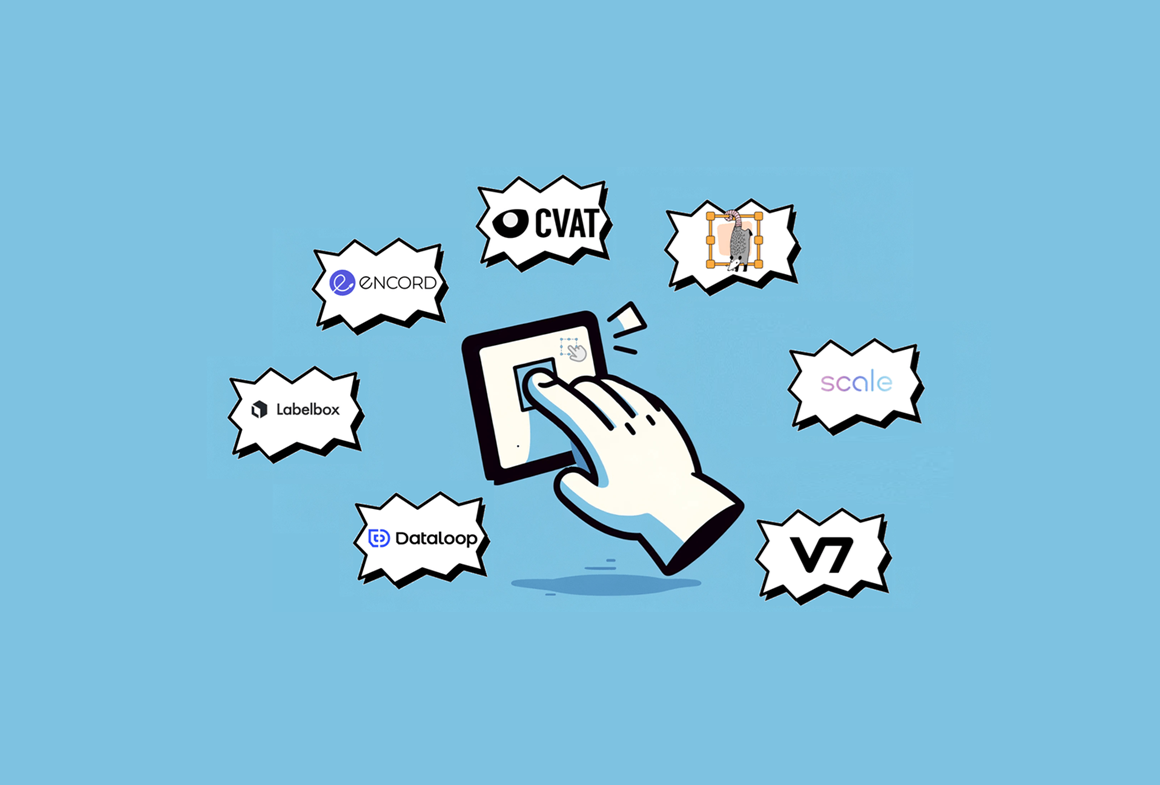From general AI to specialization: all you need to know about LLM finetuning for specific tasks

Artificial intelligence (AI) has made considerable progress in recent years, thanks in particular to large-scale language models (LLMs), capable of processing massive quantities of textual data and performing complex tasks in a variety of fields. We have also recently seen that impressive performance can be achieved by optimizing the training process (and therefore the training data set) - see DeepSeek and the shock its publication caused on the AI market!
However, it must be remembered that generalist models, while impressive, quickly reach their limits when it comes to specific tasks requiring in-depth knowledge of a particular field. This is where finetuninga process used to adapt these models to specific contexts.
LLMfinetuning involves taking a pre-trained model on large generic datasets and refining it using pre-processed and annotated industry-specific data. This technique increases model performance on specific tasks, while reducing the need for massive resources, as is the case with full initial training.
💡 Simply put: whether in medicine, finance, or customer service, language models can be tailored to meet the unique requirements of each field. In this article, discover the fundamentals of LLM finetuning, and how specialized datasets can help you specialize your models!
Why is LLM finetuning essential for specific tasks?
There are several reasons why finetuning Large Language Models (LLMs) is indispensable for specific tasks. We'll describe some of them below:
1. Adaptation to a specific field
Generalist language models are initially trained on a variety of data, enabling them to handle a wide range of tasks.
However, for specific sectors (such as medicine, finance or law), vocabulary and concepts can be highly specialized. Finetuning enables the model to be adapted to the particularities of the field, so that it responds in a more precise and contextualized way.
2. Improved performance on specific tasks
Adjusting the parameters of an LLM using specific data improves its ability to perform specialized tasks with precision. This is essential for reducing errors and providing relevant answers in complex fields where in-depth knowledge is paramount.
3. Reduced training time and costs
Finetuning offers an economic advantage, as it allows you to concentrate on adapting an already pre-trained model, rather than re-training a model from scratch. This requires less specific data and reduces calculation costs.
4. Preserving general knowledge
Finetuning makes it possible to incorporate new, specific knowledge without affecting the model's ability to perform more general tasks. This prevents previously acquired information from being forgotten, maintaining the model's versatility while making it expert in a particular domain.
How do I fine-tune an LLM?
To effectively finetune an LLM (Large Language Model), it's important to follow several key steps to ensure that the model is accurate and adapted to specific needs. Here are the main steps to follow:
- Defining the finetuning objective
Before getting started, it's essential to understand the purpose of finetuning. This involves determining which specific task or domain you wish to improve with the model (for example, medicine, finance, or customer service). This clarification enables you to target precisely the data and methods you need.
- Select a suitable pre-trained model
You need to choose a basic model (such as GPT, BERT, or LLaMa) that already has solid general capabilities. The model you select must be appropriate to the task you're aiming for, and capable of being finetuned with specific data.
- Collect high-quality annotated data
The success of finetuning depends on the quality of the data used. It is necessary to collect a set of annotated data specific to the domain or task in question. This data must be well-cleaned, consistent and representative of the problem the model is to solve. Data accuracy and representativeness are fundamental to 🔗 avoid bias and guarantee reliable results!
- Adapt hyperparameters
Adjustment of hyperparameters, such as the learning rate, is essential for optimal finetuning . Too high a learning rate could lead to rapid overlearning, while too low a rate would render training ineffective. It is often advisable to start with a low learning rate to avoid disturbing weights that have already been pre-trained.
- Managing resources and memory
Finetuning large models requires high computing power and intelligent resource management. Methods such as 🔗 Parameter-Efficient Fine-Tuning (PEFT) make it possible to adjust only a small part of the model parameters, reducing memory and computing power requirements while maintaining high performance.
- Continuous assessment
During training, it's important to closely monitor model performance using both quantitative (such as cross-loss, accuracy, etc.) and qualitative (such as relevance of results) metrics.
This detects any over-fitting or under-fitting problems and adjusts the hyperparameters accordingly!
- Testing and validation
Once training is complete, it is essential to test the finetuned model on validation data to ensure that it generalizes well. This allows us to check that it performs well on examples not seen during training, while remaining faithful to the specific objectives initially defined.
- Deployment and continuous monitoring
Finally, once the model has been validated, it can be deployed for real applications. However, it is necessary to continuously monitor its behavior to detect any drifts in performance or errors. If necessary, the model can be readjusted with new data to maintain its relevance.
Which sectors benefit most from the finetuning of artificial intelligence models?
Finetuning artificial intelligence (AI) models has become essential for many sectors requiring customized, specialized solutions. Here are just a few of the sectors that are particularly benefiting from this technology:
- Health and medicine
The medical sector benefits greatly from the finetuning of AI models, particularly for specific tasks such as medical image analysis, automated diagnosis and clinical report generation.
Models such as 🔗 MedPaLMwhich specialize in medical data processing, are a good example. Finetuning enables general models to be adapted to medical terminologies and requirements, improving the accuracy of diagnoses and predictions.
- Finance and insurance
In the financial and insurance sectors, finetuning is used for tasks such as risk management, fraud detection and predictive analysis.
Specialized models can be tuned to understand complex financial data and regulatory requirements, enabling companies to generate detailed financial reports or detect unusual transactions more efficiently.
- Law and legal services
Finetuned AI models are increasingly used in the legal field to analyze large quantities of legal documents, automate the drafting of contracts, or carry out case law research. Thanks to finetuning, these models are able to understand specific legal language and process the complex nuances of this field.
- Customer service
Finetuning AI models can enhance chatbots and virtual assistants, making them more effective for specific sectors. For example, in telecoms, banking or e-commerce, these finetuned models can provide precise answers to customer questions, using industry-specific terms and information.
- Manufacturing industry
In industry, AI models can be finetuned for tasks such as predictive maintenance, supply chain optimization and inventory management. Finetuning enables AI models to better interpret data specific to industrial machines or processes, helping to anticipate breakdowns and optimize production.
- Marketing and advertising
Companies use finetuning to optimize their advertising campaigns and marketing strategies. Tailored models can analyze specific customer data, understand consumer preferences, and generate targeted recommendations or advertising campaigns, adapted to purchasing behavior or market trends.
- Education
In education, finetuned models are used to personalize the learning experience for students.
What are the best tools and platforms for finetuning LLMs?
Here is a list of the best tools and platforms for finetuning large language models (LLMs):
1. Hugging Face Transformers
Hugging Face is one of the most popular platforms for finetuning of LLMs. Its Transformers library offers access to a wide variety of pre-trained models (such as GPT, BERT, RoBERTa, etc.) that you can adapt to specific tasks. The platform offers simple interfaces for finetuning and training models with resources tailored to the task in hand.
- Features: Open-source models, datasets, hyperparameter management, GPU/TPU support.
- Use: Widely used for NLP tasks such as text classification, text generation or machine translation.
2. OpenAI API
OpenAI's API allows you to use templates such as GPT-4 and to finetuner according to your specific needs. OpenAI offers tools for adapting LLMs to specific tasks without the need to completely re-train a model, which is particularly useful for companies that don't have the resources to train large models.
- Features: Access to powerful templates, easy finetuning via API, user-friendly interface.
- How to use: Ideal for companies looking to integrate high-performance models quickly.
3. Google Cloud AI Platform
Google Cloud offers comprehensive solutions for LLM training and finetuning via its AI Platform. With TensorFlow and JAX, you can easily adapt basic models to your specific tasks. Google also offers resources such as TPUs to speed up the training process.
- Features: High-performance infrastructure (TPU), support for large-scale finetuning , integration with other Google Cloud services.
- Use: Perfect for companies that need to manage large-scale AI projects with a solid infrastructure.
4. Kili Technology
Kili Technology is a platform focused on data annotation and LLM finetuning . It facilitates the creation of high-quality datasets and offers tools for finetuning , with a particular focus on improving annotation quality. This is particularly useful for projects requiring precise adjustments and control over annotations.
- Features: Data annotation, high-quality annotation workflows, support for LLM model finetuning.
- Use: Ideal for companies requiring precise annotations for specific tasks.
5. Azure Machine Learning
Microsoft's Azure Machine Learning platform offers tools for finetuning LLMs using automated pipelines or customized training environments. You can also use models like GPT and BERT via Azure OpenAI to develop AI solutions tailored to your needs.
- Features: pipeline automation, integration with Azure services, support for large-scale AI models.
- How to use: Suitable for companies looking for full integration with Microsoft cloud services.
6. Weights & Biases
Weights & Biases (W&B) is a platform for tracking, visualizing and optimizing machine learning experiments, including LLM finetuning. It offers tools for managing experiments, logging metrics, and visualizing training results.
- Features: Real-time tracking and visualization, hyperparameter management, team collaboration.
- Use: Useful for teams of AI researchers who want to improve finetuning efficiency and optimize their experiments.
7. SuperAnnotate
SuperAnnotate is a platform that facilitates data annotation, essential for high-quality finetuning . In addition to its annotation tools, SuperAnnotate offers functionalities for project management and automation of annotation tasks, essential for improving LLM performance in specific sectors.
- Features: AI-assisted annotation, data quality management, team collaboration.
- Use: Recommended for projects requiring large quantities of precisely annotated data.
8. Amazon SageMaker
Amazon SageMaker is a machine learning platform for training, deploying and finetuning large-scale LLM models. SageMaker offers resources for accelerating training, as well as tools for continuously monitoring and adjusting models.
- Features: Managed cloud environments, support for popular frameworks, ML pipeline management.
- Application: Suitable for companies looking to deploy finetuned LLMs on a large scale.
Conclusion
LLM finetuning is a powerful tool for adapting generalist models to specific tasks, improving their accuracy and efficiency in a variety of domains. Thanks to adapted techniques and platforms, it enables AI to be customized while optimizing the resources required.
In short, finetuning is an indispensable solution for maximizing the impact of AI models in concrete, specialized applications! Would you like to find out more? Don't hesitate to 🔗contact us !





